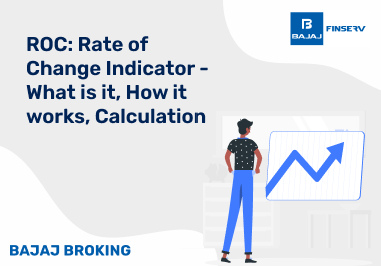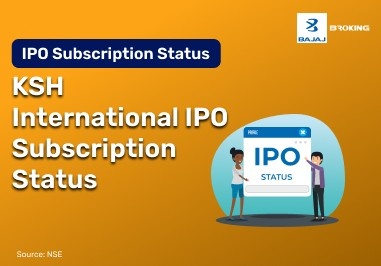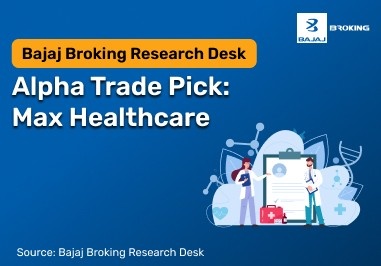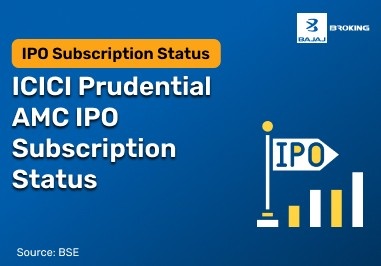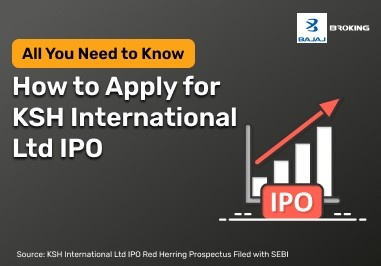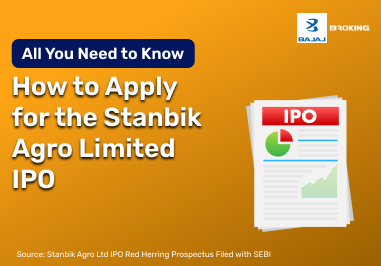Whether you are an individual or a business, it’s extremely important to understand the meaning of assets and liabilities. Assets are those things that you own and that can provide you value. However, liabilities are funds raised by you from other parties. Hence, you owe them to the extent that you have raised funds from them. Read this blog, as it explains in detail what assets and liabilities are, the types of assets and liabilities, and a lot more relevant to this topic.
Understand the Meaning of Assets
An asset is something that has some value for its owner. The owner could be an individual, a business, the government, or anyone else. An asset can provide value today or in the future, but it’s extremely important that it provides value, else it’s not an asset.
You can buy an asset from your own funds or borrowed funds. In other words, the source of funds is not important. For example, if a business buys machinery, it will be its asset, whether it has used its own funds or it has taken a loan for this purpose.
Formula of Assets
A business’s assets are resources acquired by it from all the funds it has, including shareholders’ funds and borrowed funds. Hence,
Total Assets = External Liabilities + Shareholders’ Funds
Understand The Meaning of Liabilities
When you owe something to someone else, it’s known as liabilities. The borrower can be an individual, a business, the government, or anyone else. When an owner invests money in his business, that money is a liability for the business because the business has to pay that money back to its owner.
The most common types of liabilities for a business include short-term and long-term loans. Similarly, when an individual takes a loan to build a house, buy a car, or for any other purpose, it’s that person’s liability.
Formula of External Liabilities
External liabilities are funds borrowed by a business from other parties. Here’s the formula for it:
External Liabilities = All External Long-term Liabilities + All External Short-term Liabilities
Types of Assets
The various types of assets are described below:
Current Assets – The assets that can be converted into cash within a year are called current assets, for example, inventory or stock of goods, debtors, prepaid expenses, and of course cash and cash equivalents.
Fixed Assets – The assets that are purchased to be utilised over a long-term are called fixed assets, for example, plant and machinery, equipment, etc.
Financial Assets – When we invest in shares, bonds, or any other financial instrument, these are known as financial assets.
Intangible Assets – The assets that can’t be seen or have no physical form are known as intangible assets, like goodwill, copyrights, trademarks, and patents.
Types of Liabilities
The prominent types of liabilities are explained as follows:
Current Liabilities – The liabilities that are payable in cash within a year are known as current liabilities, for example, unpaid wages and salaries of staff, interest payable on loans, dividends payable on shares, short-term loans due within a year, etc.
Long-Term Liabilities – The liabilities that are due after a year are known as long-term liabilities, for example, long-term loans and debentures of a business.
Shareholders’ funds – Now, this is an interesting one. When a shareholder invests funds in a business, it’s not his liability. However, it is the liability of that business because it owes those funds to the shareholder.
Additional Read: What Are Underlying Assets
Key Differences between Assets and Liabilities
The main differences between assets and liabilities and their types are summarised below:
Assets
| Liabilities
|
Assets are resources owned by an individual, a business, the government, or anyone else.
| Liabilities are what you, a business, the government, or someone else owe to another party.
|
Assets provide value either currently or in the future.
| Liabilities have to be paid either in the current year or in the future.
|
Assets are purchased either from a business’s own funds or liabilities.
| Liabilities are funds raised by a business or anyone else from outsiders.
|
From a business’s viewpoint, assets show how well its resources are generating value.
| From a business’s perspective, liabilities show how prudently a company has borrowed funds from others for its operations.
|
Examples of assets include plant & machinery, trademarks, patents, accounts receivables, prepaid expenses, cash and cash equivalents, and marketable securities.
| Examples of liabilities include short-term and long-term loans, debentures, bonds, unpaid expenses, etc.
|
Highlights: Types of Trades in India
- Short-Term Trades:
- These trades are usually completed within a single trading session.
- Example: Buying a stock in the morning and selling it before market close.
- Long-Term Trades:
- Positions are held for an extended duration based on market trends.
- Example: Holding a company’s stock for several months based on quarterly performance.
- Intraday Trades:
- Traders buy and sell securities on the same day, without carrying positions overnight.
- Example: Buying shares of Company X at ₹120 and selling at ₹125 before the market closes.
- Swing Trades:
- Trades that capture short- to medium-term gains over several days or weeks.
- Example: Buying based on a bullish trend and exiting before the earnings report.
- Scalping:
- A strategy involving multiple trades during the day to capture small price movements.
- Example: Making 10 trades in one day with a ₹1–₹2 margin per trade.
- Positional Trades:
- These are held for weeks or months, often driven by macroeconomic trends or company fundamentals.
- Example: Buying an FMCG stock based on seasonal demand expectations.
Current Liabilities (due within one year):
- Accounts Payable:
- Bills payable to suppliers for goods purchased.
- Example: ₹50,000 due to a vendor for raw materials.
- Short-Term Loans:
- Borrowings to be repaid within a short period.
- Example: ₹1,00,000 loan from a bank due in 6 months.
- Outstanding Utility Bills:
- Pending payments for electricity, water, or internet.
- Example: ₹5,000 electricity bill not yet paid.
- Wages Payable:
- Salaries due to employees at the end of the month.
- Example: ₹2,00,000 in unpaid employee wages.
- Taxes Payable:
- Taxes accrued but not yet paid to authorities.
- Example: ₹15,000 in pending GST dues.
Non-Current Liabilities (due beyond one year):
- Long-Term Borrowings:
- Debts or loans payable over several years.
- Example: ₹5,00,000 term loan repayable over 5 years.
- Deferred Tax Liabilities:
- Tax payable in the future due to temporary accounting differences.
- Example: ₹20,000 in deferred tax from depreciation.
- Lease Obligations:
- Long-term lease payments for business property or machinery.
- Example: ₹3,00,000 equipment lease payable over 3 years.
- Bonds Payable:
- Debt securities issued to investors.
- Example: ₹10,00,000 in corporate bonds maturing in 10 years.
- Pension Benefit Obligations:
- Funds owed to employees after retirement.
- Example: ₹50,000 set aside annually for employee pensions.
Examples of Assets
Current Assets (convertible into cash within a year):
- Cash and Cash Equivalents:
- Readily available funds.
- Example: ₹1,00,000 in the company’s bank account.
- Inventory:
- Goods available for sale or raw materials.
- Example: ₹2,00,000 worth of finished stock.
- Accounts Receivable:
- Payments due from customers.
- Example: ₹75,000 pending from a client.
- Marketable Securities:
- Easily tradable financial assets.
- Example: ₹1,50,000 in mutual fund units.
- Prepaid Expenses:
- Advance payments for services.
- Example: ₹10,000 paid in advance for office rent.
Non-Current Assets (held for more than one year):
- Property, Plant and Equipment (PPE):
- Tangible fixed assets.
- Example: ₹10,00,000 office building.
- Long-Term Investments:
- Investments that are not intended to be sold in the short term.
- Example: ₹5,00,000 invested in equity shares.
- Patents and Trademarks:
- Intangible legal assets.
- Example: ₹3,00,000 for registered brand logo.
- Goodwill:
- Premium paid during acquisitions.
- Example: ₹2,00,000 goodwill from purchasing another business.
- Deferred Tax Assets:
- Tax benefits available in future periods.
- Example: ₹15,000 deferred from carry-forward losses.
How Assets and Liabilities Affect Your Financial Health
A business’s assets affect its financial health based on how it utilises them. For example, if a firm has a plant, which is not able to manufacture high-quality products, then the firm will find it tough to make money. Conversely, if its plant is able to make high-quality products, it will be able to do good business.
A business’s liabilities affect its financial health based on how it raises them. For example, if a firm raises a debt at an extremely high interest rate, it will be detrimental to its profits. It can even result in a situation, wherein the firm may not be able to pay its loan, which will badly affect its reputation.
Personal Finance Examples of Assets and Liabilities
All of us in our personal capacity have some assets and liabilities. For example, a lot of people own a house, a mobile phone, a car, a bike, some furniture, etc. These are their personal assets. Their owner owns such assets in their personal capacity.
Similarly, a lot of us have liabilities in our personal capacity as well. Examples of liabilities taken in a personal capacity include housing loans, credit cards, car loans, education loans, etc.
Business Finance Examples of Assets and Liabilities
From a business’s viewpoint, its assets include current assets (debtors, inventory, prepaid expenses, cash and cash equivalents, etc.), fixed assets (plant & machinery), financial assets (investments in stocks and bonds of other companies), intangible assets (patents, goodwill, trademarks, etc.)
A business’s liabilities include current liabilities (unpaid wages and salaries, short-term loans, creditors, deferred tax liabilities, etc.), and long-term liabilities (loans that are payable after a year).
A business’s liabilities also include the funds invested by its shareholders. It’s a business’s responsibility to generate a sufficient return on its shareholders' funds. Besides, when a business is liquidated, it has to return the money invested in it by its shareholders. That’s why shareholders' funds are shown on the liabilities side of a company’s balance sheet.
Conclusion
If you are opening a demat account (free or otherwise), it’s not tough to understand the meaning and types of assets and liabilities. However, it can be challenging to utilise an asset well. Likewise, it may be tough to pay a liability in due time. Hence, a good business is one that utilises its assets to generate sufficient returns for its shareholders and pay all its external liabilities in due time. If it’s not able to do so, then it’s not a well-managed business.
Disclaimer: Investments in the securities market are subject to market risk, read all related documents carefully before investing.
This content is for educational purposes only. Securities quoted are exemplary and not recommendatory.
For All Disclaimers Click Here: https://bit.ly/3Tcsfuc

